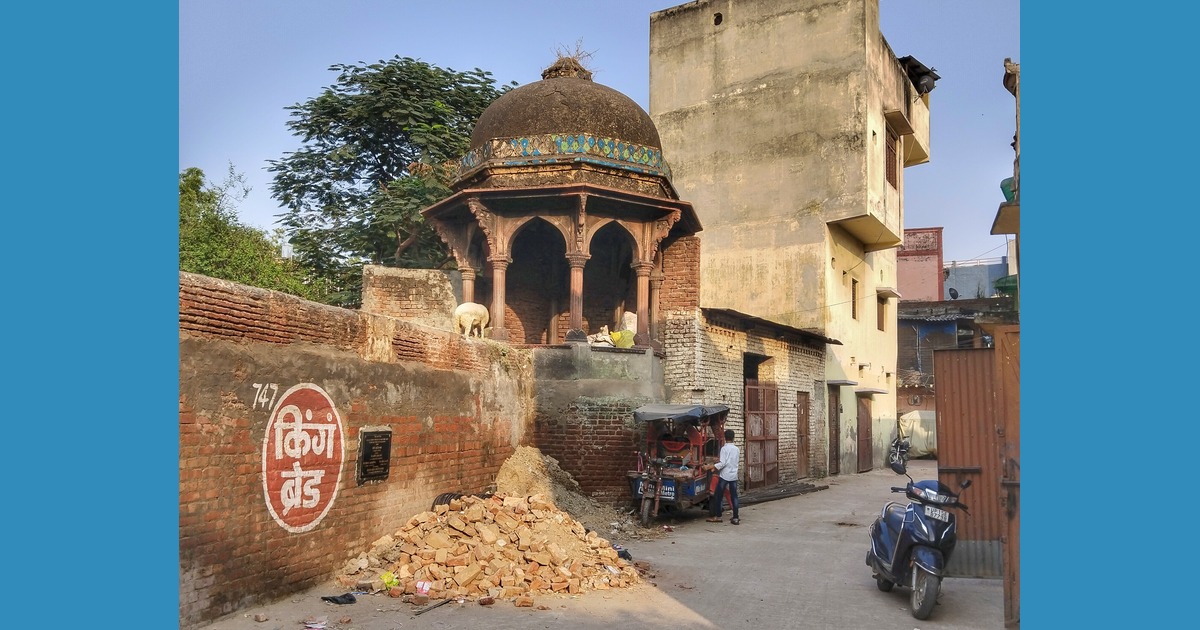
Gwalior, a city in central India which traces its origins deep in ancient legends is an underrated tourist destination despite being close enough to the famed tourist circuit of Golden Triangle comprising of Delhi, Jaipur, and Agra. There is lot more than just the architectural marvels for the backpackers to enjoy in this city of royals.
Gwalior Fort
Gwalior Fort, perched on a rocky hilltop in the heart of India, stands proudly as a testament to the grandeur of Indian architecture and the rich history of the region. Often referred to as the "Gibraltar of India," this formidable fort has witnessed the rise and fall of many dynasties, each leaving its unique mark on the architecture and culture of the place.
Architectural Splendour
The fort's architecture is a blend of different styles, reflecting the diverse cultures and rulers that influenced its construction over the centuries. The main attractions within the fort include:
Man Singh Palace: Built by Raja Man Singh Tomar in the 15th century, this palace is a fine example of Hindu architecture. It is adorned with intricate carvings, vibrant tile work, and ornate decorations. The palace's façade, with its stunning blue tiles and lattice work, is particularly striking.
Gujari Mahal: Constructed by Raja Man Singh for his beloved queen Mrignayani, this palace now houses an archaeological museum. The exhibits include rare artifacts, sculptures, and ancient relics that provide a glimpse into the region's history.
Sas Bahu Temples: Simplified nomenclature of the ‘Sahasrabaahu’ these twin temples, dedicated to Vishnu, are masterpieces of intricate carvings and stunning architecture. Despite the name, which translates to "Mother-in-law and Daughter-in-law," the temples are not connected to any familial relationships but are instead a representation of the architectural beauty of the era.
Teli Ka Mandir: This temple is one of the oldest structures in the fort, dating back to the 9th century. It is the only ancient temple in north India which showcases a unique blend of Dravidian and North Indian architectural styles, making it a fascinating site for history and architecture enthusiasts.
.jpg)
Jain Rock Sculptures: The fort is also renowned for its colossal Jain rock carvings at Siddhachal and Gopachal sites. These statues, some as tall as 57 feet, are carved directly into the hillside and depict various Jain Tirthankaras. They reflect the significant Jain influence in the region during the medieval period.
Pleasures of the City
Beyond the fort, the city of Gwalior offers a blend of historical charm and modern attractions:
Gwalior Trade Fair: Held annually from January to February, this is one of the largest fairs in India, attracting visitors from across the country. The fair showcases a wide range of products, from traditional handicrafts to modern goods, providing a vibrant shopping experience.
Maharaj Bada: A marketplace envisioned by erstwhile Maharajas of Gwalior on the lines of contemporary European markets, it still is one of the busiest shopping spots within the old city. With architecture exuding a healthy dose of colonial and European influence, it is a place to shop for famed Chanderi sarees, handicrafts, metal products and souvenirs.

Scindia Palace: Also known as Jai Vilas Palace, this grand structure is the residence of the Scindia family. Part of the palace has been converted into a museum, displaying royal artifacts, antiques, and the opulent lifestyle of the Scindias.
Sarod Ghar: This museum, dedicated to the legendary musician Ustad Amjad Ali Khan, offers a deep dive into the world of classical Indian music. It houses a collection of musical instruments and memorabilia related to renowned musicians.
Local Cuisine: Gwalior’s culinary delights are a treat for food lovers. Do not miss the local delicacies such as laddus of Bahadura, poha, and the famous Gwalior kachori known here as ‘Bedhai’. Street food stalls and local eateries offer an authentic taste of the region’s flavors.
Apart from these, Tomb of Mohammad Ghaus, teacher of famed musician Tansen and Birla Sun Temple at Morar are other attractions of the city. Gwalior boasts of a range of hospitality services catering to various preferences of tourists arriving here.
A visit to Gwalior Fort and the city is a journey through time, offering a rich tapestry of history, culture, and architectural splendour. Whether you are a history buff, an architecture enthusiast, or simply looking to soak in the local culture, Gwalior has something to offer for every traveller. The majestic fort, with its storied past, combined with the vibrant life of the city, makes for an unforgettable travel experience.
Popular Categories
Read More Articles
Travel and Tourism
Meerut’s vanishing heritage: Why its mughal treasures are crumbling away by Mohammed M. Raza November 19, 2025Business
Hafele Valeriya Dishwasher: The New Standard in Kitchen Hygiene by Awadh 360° Desk November 14, 2025Entertainment
Banaras gave me the notes, Bhatkhande polished them: Bhojpuri singer Sarita Tiwari by Awadh 360° Desk November 10, 2025Travel and Tourism
Statue of Unity Sets New Tourist Footfall Record as PM Modi Hails Vallabhbhai Patel's Legacy by Awadh 360° Desk October 31, 2025




